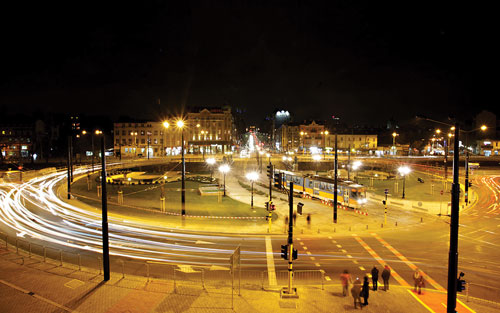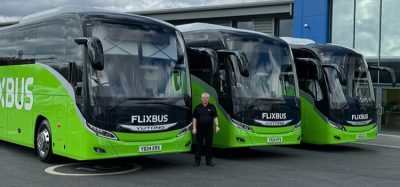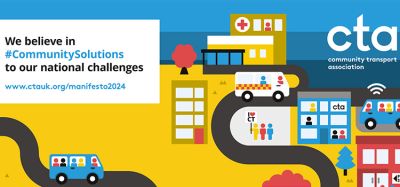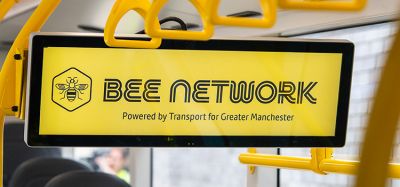Sofia – a city in motion
- Like
- Digg
- Del
- Tumblr
- VKontakte
- Buffer
- Love This
- Odnoklassniki
- Meneame
- Blogger
- Amazon
- Yahoo Mail
- Gmail
- AOL
- Newsvine
- HackerNews
- Evernote
- MySpace
- Mail.ru
- Viadeo
- Line
- Comments
- Yummly
- SMS
- Viber
- Telegram
- Subscribe
- Skype
- Facebook Messenger
- Kakao
- LiveJournal
- Yammer
- Edgar
- Fintel
- Mix
- Instapaper
- Copy Link
Posted: 16 December 2013 | Evgeni Krussev, International Projects Expert, the Sofia Urban Mobility Centre | No comments yet
Sofia is the capital of Bulgaria and the biggest administrative, cultural and economic centre of the country. The population of Sofia is approximately 1.3 million inhabitants and its territory is 1,311km2. The organisation, management, supervision and finance of Sofia public transport as an integrated process are assigned to the Sofia Urban Mobility Centre, or SUMC. The development and operation of the open-space parking system in Sofia is also the responsibility of the SUMC. The SUMC defines and proposes measures for improvement of the parking situation and, if approved by the Sofia Municipal Council, applies these measures. Parameters of the public transport system Sofia’s public transport system is the biggest and the most complex urban transport system in Bulgaria and includes tram, trolleybus, bus and metro operations. The public transport network is well-developed with 93 bus lines, 15 tram lines, nine trolleybus lines and two metro lines. The public transport service in Sofia is performed by three municipal companies – ‘Stolichen Avtotransport’ EAD, ‘Stolichen Elelktrotransport’ EAD and ‘Metropolitan’ EAD, plus three private bus transport operators. In 2012, the provision of public transport services was 61.3 million vehicle kilometers. The number of public transport vehicles in Sofia at its peak hour is 839, which includes: 169 trams; 95 trolleybuses; 549 buses; and 26 metro trains…


Sofia is the capital of Bulgaria and the biggest administrative, cultural and economic centre of the country. The population of Sofia is approximately 1.3 million inhabitants and its territory is 1,311km2. The organisation, management, supervision and finance of Sofia public transport as an integrated process are assigned to the Sofia Urban Mobility Centre, or SUMC. The development and operation of the open-space parking system in Sofia is also the responsibility of the SUMC. The SUMC defines and proposes measures for improvement of the parking situation and, if approved by the Sofia Municipal Council, applies these measures.
Parameters of the public transport system Sofia’s public transport system is the biggest and the most complex urban transport system in Bulgaria and includes tram, trolleybus, bus and metro operations. The public transport network is well-developed with 93 bus lines, 15 tram lines, nine trolleybus lines and two metro lines.
The public transport service in Sofia is performed by three municipal companies – ‘Stolichen Avtotransport’ EAD, ‘Stolichen Elelktrotransport’ EAD and ‘Metropolitan’ EAD, plus three private bus transport operators. In 2012, the provision of public transport services was 61.3 million vehicle kilometers. The number of public transport vehicles in Sofia at its peak hour is 839, which includes: 169 trams; 95 trolleybuses; 549 buses; and 26 metro trains.
The Sofia ‘Integrated Urban Transport’ project
In order to improve the public transport offering in the city, the Sofia Municipality together with the SUMC has developed a project called ‘Integrated Urban Transport’ and successfully applied for its funding under the Operational Programme ‘Regional Develop – ment’ 2007-20131. The project is funded by the European Regional Development Fund and the state budget of the Republic of Bulgaria. It is expected that the project will significantly ease traffic in the capital by making public transport more attractive and a preferred option because of the improved speed and convenience it will offer.
Project components
Reconstruction, rehabilitation and construction of tram lines
Major reconstruction of the tram line on Bulgaria Blvd is planned. This will allow increased speeds along the tram route and an increase to line capacity of 16 million passengers annually. Construction of a new tram line from Seminary to Darvenitsa and the Students’ city districts is also planned, consisting of 2.8km of new tram track and the reconstruction of 1.8km of existing tram track. With these improvements, students will travel for 15-20 minutes to get to the City Centre and will have convenient connections with the metro.
Electronic information board installation
Installation of 600 electronic information boards with remote control giving real-time information to passengers will be rolled-out. Currently, 108 transport stops have been provided with such boards. The design of the new information boards will ensure that all relevant and important information is made available to the passengers – i.e. the type of vehicle (bus, trolleybus or tram); the route number; final terminal of the line; and actual time of arrival at the stop.
Intelligent Traffic System
The installation of an Intelligent Traffic System at 20 major intersections in Sofia will provide priority to 750 public transport vehicles at signalised intersections without imposing unreasonable delays on other traffic, thus resulting in time saving benefits to public transport vehicles and passengers.
New trolleybuses
Delivery of 50 new trolleybuses will help the trolleybus fleet to be almost 100% renewed. These trolleybuses are planned to serve the busiest trolleybus routes (lines 1, 2, 5, and 9). They will be 18m-long with low-floor access and a capacity of at least 160 passengers as well as air conditioning.
Preparation of marketing and legal study
Preparation of marketing and a legal study for the opportunities and conditions to lease the right for installation, operation and maintenance of shelters on public transport stops is underway. It will give clarity on the options for the forthcoming gradual renewal of these shelters which is necessitated by the poor condition of most of them.
Expected results
By achieving the project components, improvements will be made to the performance of public transport and will make it the preferred mode of transport in Sofia. Also, congestion will be reduced at the busiest intersections in the city (up to 20%) with the installation of the Intelligent Traffic System, and there will be a reduction in air pollution and electricity costs. Maintenance costs of trolleybuses will be optimised, plus the operational speed of trolleybuses and trams will be increased and improvements to passenger comfort and convenience will be seen.
In parallel, under the Operational Programme through measures to improve air quality, environmentally-friendly vehicles will be purchased, including 126 new low-floor articulated CNG buses, 10 new metro trains and 20 new low-floor trams.
Sofia Urban Mobility Centre Intelligent Transport Systems
Automated systems are implemented in Sofia public transport which monitor and control public transport and provide real-time information for passengers.
Automated System for Control and Management of the Transport
Also known as ASCMT, this is a system for management and control of public transport based on GPS positioning. All public transport vehicles are equipped with special devices. This automated vehicle location system monitors the performance of transport opera tors and allows the installation of information boards at public transport stops showing the remaining time for vehicle arrival as well as providing realtime information via the internet.
Automated Fare Collection System
Also known as AFCS, this is one of the most contemporary ticketing systems based on contactless smartcards and fare-collection devices which allow implementation of flexible and easy to modify tariffs. So far the system has only been implemented in trams and trolley – buses. In 2012, a tender procedure for the second stage of the fare collection system began to implement the system in buses.
A ticket vending machine was put in operation at Sofia Airport – Terminal 1. A similar one will be installed in Terminal 2 allowing payment of tickets to be made by debit or credit card.
Real-time public transport information
The boards receive data from the GPS system installed in public transport vehicles and show real-time information about the movement of public transport vehicles – for instance when the next vehicle on a certain line will be at the stop. Some of the boards provide voice information. Two of the boards are experimentally equipped with solar power supply.
E-services via the SUMC website
The SUMC website2 provides a number of e-services, including:
Virtual tables
Virtual tables provide real-time information for the remaining time for a vehicle arrival on each of the 2,500 public transport stops. Options to search the public transport stop by route, by station or via a map search is provided, and information is also given whether the vehicle is accessible and/or air-conditioned.
Schedules and routes
Detailed information regarding schedules and routes of all public transport lines is made available on the website.
Public transport journey planner
The website will give details of several route choices including the recommended route, a route with the least transfer and a route with the least walking distance.
Route changes
Information about changes in the routes of public transport are shown via the website.
Traffic information map
A traffic information map is provided for more than 30 streets and intersections detailing the traffic and the expected delays. The map presents information about ongoing repairs, public events and other events affecting traffic.
Tariff calculator
Based on data entered by the user regarding number and frequency of trips, the website will calculate the most suitable public transport travel document.
Check for towed-away vehicles
You can verify whether a car was towed-away and at which car park it is located.
Mobile version of site
The mobile platform of the website3 contains all news and articles etc. and is located on the main-site. Through a fast and intuitive menu, the user can easily obtain the necessary information. The mobile version can be used at public transport stops for receiving real-time information about the remaining time for vehicle arrival by entering the unique code placed at each public transport stop.
The Sofia Urban Mobility Centre aims to constantly increase the quality of transport services in Sofia. By providing real-time information services etc., public transport passengers are given better conditions.
Reference
1. www.bgregio.eu
2. www.sofiatraffic.bg
3. m.sofiatraffic.bg
Biography
Evgeni Krussev is an Expert in the International Projects and Programmes Department of the Sofia Urban Mobility Centre. A graduate from the University of National and World Economy in Sofia, Evgeni has been involved in several European projects related to economic, social and environmental aspects of public transport and mobility. Evgeni’s interests are in the field of transport, intelligent transport systems, traffic management and sustainability.
Related topics
Business Models, Fleet Management & Maintenance, Intelligent Transport Systems (ITS), Multimodality, Ticketing & Payments, Transport Governance & Policy
Issue
Issue 6 2013
Related modes
Trams
Related cities
Bulgaria








